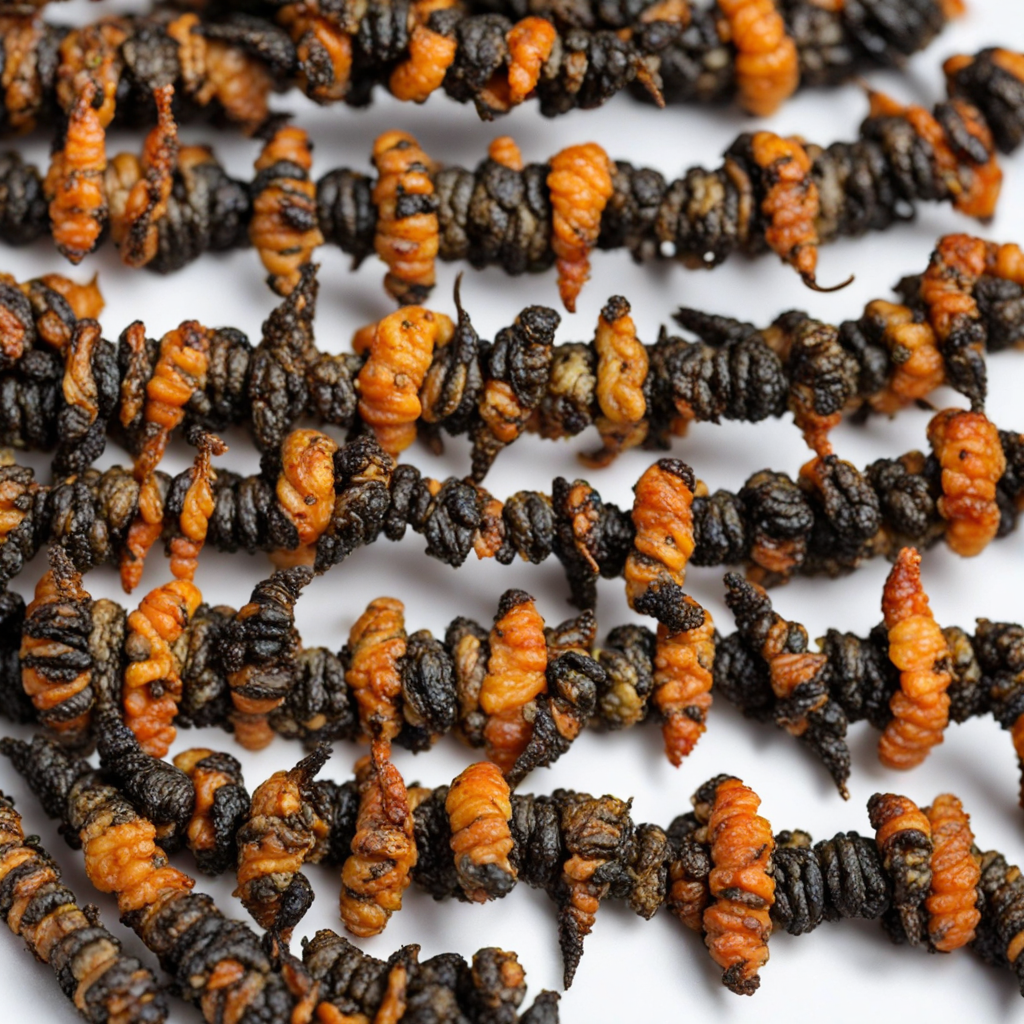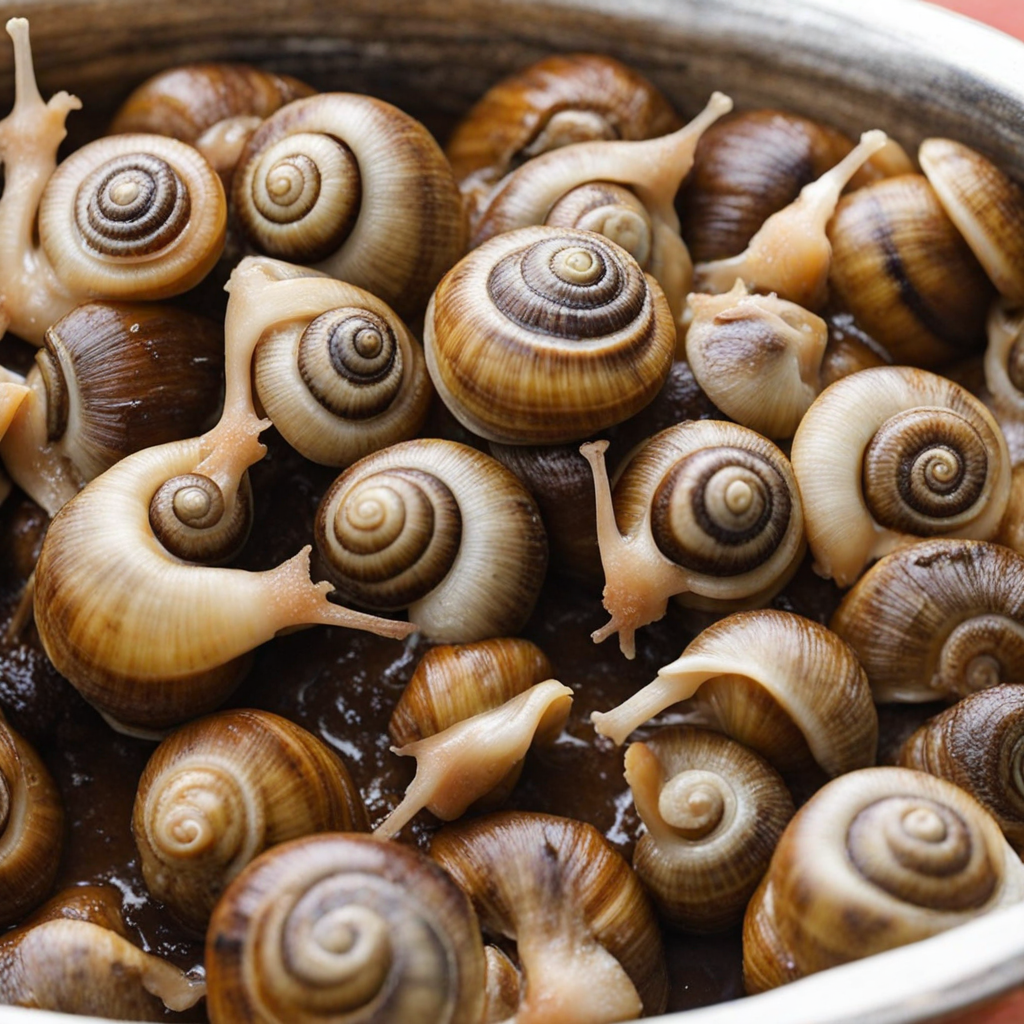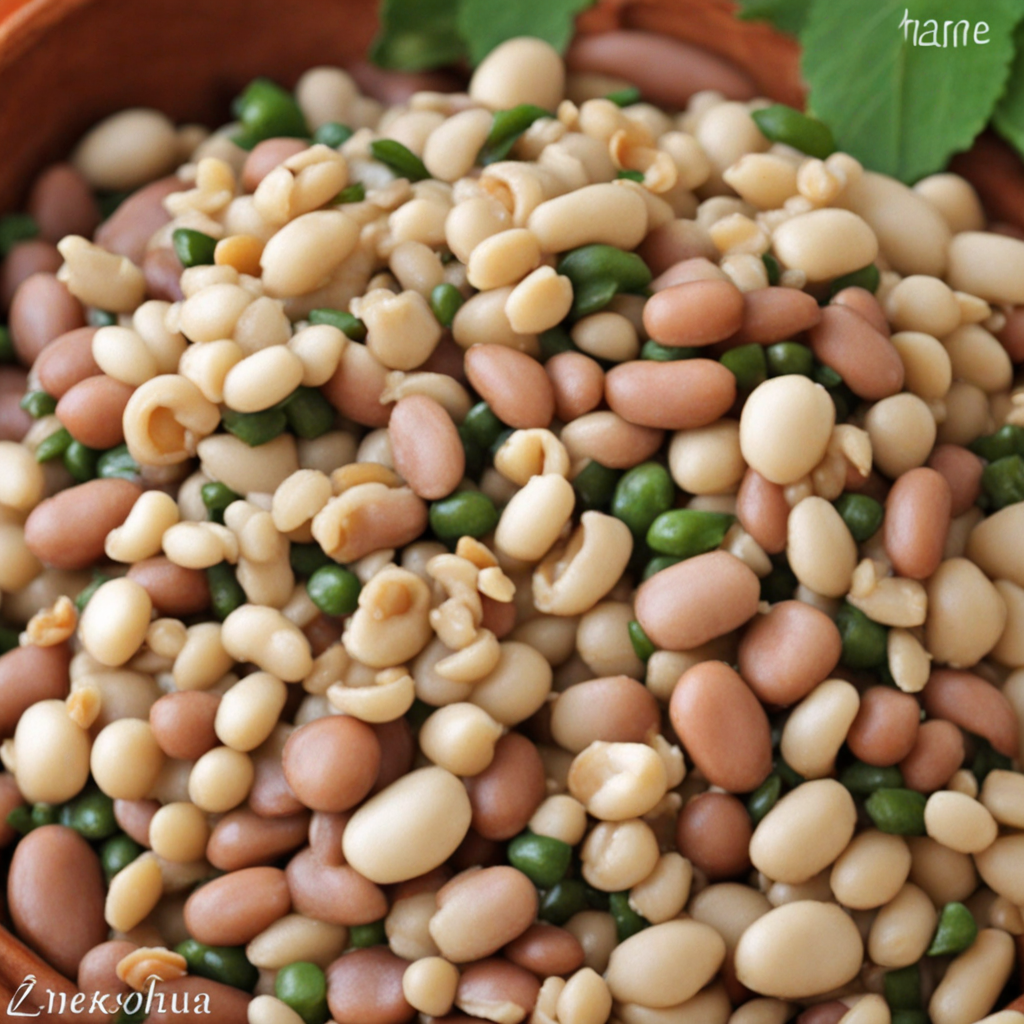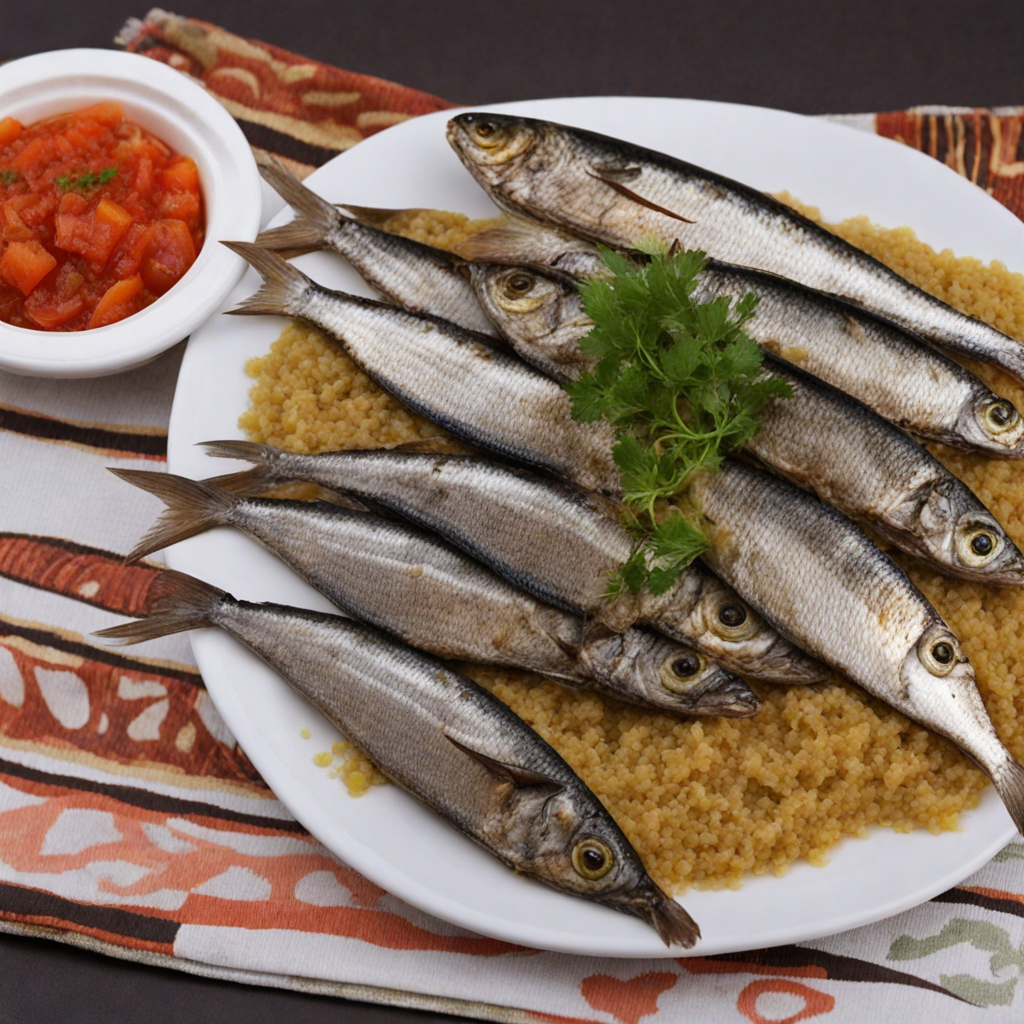Mopane Worms
Mopane worms are the caterpillars of the Emperor Moth, predominantly found in the Mopane tree regions of southern Africa, particularly Zimbabwe. These edible larvae are typically harvested during the rainy season when they are plump and nutritious. Rich in protein, fiber, and essential minerals, mopane worms are a staple in local diets, showcasing the resourcefulness of the communities that rely on them. Their unique texture and earthy flavor make them an adventurous ingredient for those looking to expand their culinary horizons. When prepared, mopane worms can be found dried, fried, or used in stews. Dried mopane worms are often rehydrated and seasoned, leading to a chewy yet slightly crunchy bite that can be quite satisfying. Many people enjoy them as a snack, lightly salted and spiced, offering a savory snack experience. When cooked in stews, they absorb the flavors of the broth and contribute a hearty depth, making them a nutritious addition to various dishes. The taste of mopane worms is often described as nutty with a hint of umami. Their flavor profile can vary depending on how they are prepared, with fried versions providing a rich, crispy texture, while those in stews offer a softer mouthfeel. As you explore this unique food, you’ll discover a blend of traditional flavors and modern culinary creativity, all rooted in Zimbabwe’s rich cultural heritage. Embracing mopane worms not only introduces you to a new taste but also connects you to the sustainable practices of local communities.
How It Became This Dish
Amacimbi: A Culinary Journey Through Zimbabwe Amacimbi, also known as mopane worms, is a delicacy deeply embedded in Zimbabwe's culinary landscape. These edible caterpillars are the larvae of the Gonimbrasia belti moth, which primarily feeds on the leaves of the mopane tree (Colophospermum mopane) found in the savannas of Southern Africa. While often considered an acquired taste, amacimbi has a rich history that reflects the interplay of culture, environment, and economy in Zimbabwe. #### Origins and Early Consumption The consumption of amacimbi dates back centuries, rooted in the traditions of various indigenous tribes across southern Africa. For the Shona people, one of the largest ethnic groups in Zimbabwe, amacimbi is more than just food; it represents a connection to their history and ancestral practices. The gathering of these worms typically occurs during the rainy season when the mopane trees shed their leaves, and the caterpillars are most abundant. Traditionally, women and children would collect amacimbi, which were then dried and preserved for later use. This process not only provided a vital source of protein during the lean months but also fostered community bonding, as families would come together to harvest and prepare this seasonal bounty. Amacimbi became a staple in the diet of many rural communities, often served as a side dish or incorporated into stews and sauces. #### Cultural Significance Amacimbi holds significant cultural importance in Zimbabwe. It is a symbol of sustenance, resilience, and resourcefulness. For many families, particularly in rural areas, these worms are a reliable food source that can be harvested with minimal investment. Their collection and preparation are often accompanied by traditional practices and rituals, reinforcing their role in cultural identity. In recent years, there has been a growing recognition of amacimbi beyond its immediate nutritional value. The worms are celebrated in local cuisine, often featured in festivals and culinary events that promote traditional Zimbabwean dishes. This cultural renaissance has led to a renewed appreciation for indigenous foods, fostering pride among younger generations who may have previously overlooked their heritage in favor of Western diets. #### Nutritional Value and Economic Impact Amacimbi are not only culturally significant but also nutritionally rich. They are a source of high-quality protein, essential amino acids, and various vitamins and minerals, making them a sustainable alternative to conventional livestock. As global awareness of food security and sustainable practices increases, the value of entomophagy (the consumption of insects) is being recognized worldwide. In Zimbabwe, amacimbi plays a crucial role in the local economy. The harvesting and sale of these worms have become a vital income source for many households, particularly for women who dominate this sector. During the harvest season, markets in rural areas overflow with amacimbi, attracting buyers from urban centers. The trade not only supports families but also contributes to local economies, helping to alleviate poverty. #### Development Over Time The development of amacimbi as a culinary staple has evolved alongside societal changes in Zimbabwe. Historically, the consumption of mopane worms was largely limited to rural communities. However, with urbanization and globalization, their popularity has transcended geographical and cultural boundaries. In the late 20th century, Zimbabwe faced economic challenges, including hyperinflation and food insecurity. During this tumultuous period, the reliance on indigenous foods like amacimbi increased as families sought cost-effective and nutritious alternatives. This shift led to a resurgence in the harvesting and consumption of mopane worms, highlighting their role as a resilient food source amid adversity. As Zimbabwean cuisine began to gain recognition on the global stage, amacimbi found its way into gourmet restaurants and culinary tourism initiatives. Chefs have embraced the unique flavor profile of these worms, showcasing them in innovative dishes that blend traditional and contemporary cooking techniques. This fusion not only honors the cultural heritage of amacimbi but also introduces it to a wider audience, challenging preconceived notions about insect consumption. #### Challenges and Sustainability Despite its cultural and economic significance, the harvesting of amacimbi is not without challenges. Overharvesting, habitat destruction, and climate change pose threats to the mopane tree populations and, consequently, the availability of these worms. As demand increases, it becomes imperative to adopt sustainable harvesting practices that ensure the longevity of this vital resource. Efforts are being made to promote sustainable practices within communities. Education programs aimed at teaching sustainable harvesting techniques and the importance of biodiversity are crucial for maintaining ecological balance. Additionally, the establishment of cooperatives can empower local harvesters to engage in responsible practices that protect their natural resources while still benefiting economically. #### The Future of Amacimbi Looking ahead, amacimbi stands at the intersection of tradition and innovation. As global interest in entomophagy grows, there is potential for Zimbabwean cuisine to gain further recognition on the international stage. The unique flavor and nutritional benefits of amacimbi can attract health-conscious consumers and food enthusiasts alike. Moreover, as climate change poses increasing challenges to food security, insects like amacimbi offer a sustainable alternative protein source. The need for diversification in diets and agricultural practices is more pressing than ever, and incorporating traditional foods into modern diets can help bridge the gap. In conclusion, amacimbi is not merely a dish; it is a testament to Zimbabwe's rich cultural heritage, resourcefulness, and resilience. Its journey from a local delicacy to an emerging global phenomenon reflects the dynamic relationship between food, culture, and the environment. As Zimbabwe continues to navigate the complexities of modernity, amacimbi remains a symbol of hope, sustainability, and the enduring spirit of its people.
You may like
Discover local flavors from Zimbabwe







